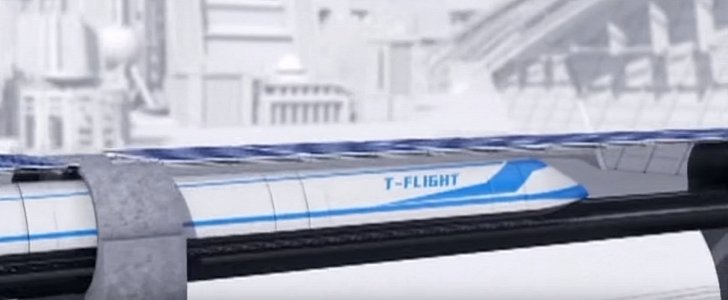When Elon Musk first talked about his plans to build the Hyperloop, most people felt they were the ramblings of an infatuated man who's had so much success he thinks he can do anything now.
The Tesla and SpaceX (now Boring Company too) CEO talked about a maglev train going in a near-vacuum tube at speeds of over the speed of sound, which is fine for a talk down at the pub after a few beers, but this was serious.
Two years or so later and Musk's project is starting to catch shape. The tunnels dug by his Boring Company finally seem to be used for the right purpose (Hyperloop instead of those electric sleds transporting personal cars), and the Hyperloop pods are doing speed tests, with Tesla's coming up as the quickest (even though it's designed to push other pods).
Musk is still far off from the target velocity of over 1,000 mph (1,610 km/h) and a long-enough track to actually stand a chance of testing it, but things are moving forward - albeit at a slower pace than most of us would like them to.
With even greater distances separating its major cities than the U.S.A., China could do with a fast and cheap land transportation system, which means it would be the perfect place for a pioneering Hyperloop circuit. Only the Chinese aren't interested in working with Musk. Instead, they are developing their own system and taking things to a new level while they do it.
The China Aerospace Science and Industrial Corporation (CASIC) has announced the launch of a program of its own that eventually aims to reach ground speeds of 2,300 mph (4,000 km/h). Named T Flight (or flying train), the super high-speed train isn't a fluke coming from an unknown startup: CASIC had a $1.5 billion profit last year and employs 150,000 people.
The company wants to complete research by 2020 and launch its first operating routes around the Wuhan province in China. Initially, the pods would travel at up to 620 mph (1,000 km/h), with one more intermediate level planned until reaching the top speed of 2,300 mph (4,000 km/h).
The designed pod seats 16 people and travels through a seven-by-seven-foot tunnel, which is considerably tighter than Boring Company's 13.5-feet diameter. The animation shows the vehicles being launched in various directions using a turntable.
CASIC doesn't tell us exactly how it plans to reach these speeds and why its system should be able to go faster than the Hyperloop, but this technology does make it sound as if the only actual limit is that of the passengers' safety.
Air travel has long been humanity's quickest way of getting around our planet, but if these companies are successful, that looks like it's about to change. Now if only they could find a way to cross the oceans as well...
Two years or so later and Musk's project is starting to catch shape. The tunnels dug by his Boring Company finally seem to be used for the right purpose (Hyperloop instead of those electric sleds transporting personal cars), and the Hyperloop pods are doing speed tests, with Tesla's coming up as the quickest (even though it's designed to push other pods).
Musk is still far off from the target velocity of over 1,000 mph (1,610 km/h) and a long-enough track to actually stand a chance of testing it, but things are moving forward - albeit at a slower pace than most of us would like them to.
With even greater distances separating its major cities than the U.S.A., China could do with a fast and cheap land transportation system, which means it would be the perfect place for a pioneering Hyperloop circuit. Only the Chinese aren't interested in working with Musk. Instead, they are developing their own system and taking things to a new level while they do it.
The China Aerospace Science and Industrial Corporation (CASIC) has announced the launch of a program of its own that eventually aims to reach ground speeds of 2,300 mph (4,000 km/h). Named T Flight (or flying train), the super high-speed train isn't a fluke coming from an unknown startup: CASIC had a $1.5 billion profit last year and employs 150,000 people.
The company wants to complete research by 2020 and launch its first operating routes around the Wuhan province in China. Initially, the pods would travel at up to 620 mph (1,000 km/h), with one more intermediate level planned until reaching the top speed of 2,300 mph (4,000 km/h).
The designed pod seats 16 people and travels through a seven-by-seven-foot tunnel, which is considerably tighter than Boring Company's 13.5-feet diameter. The animation shows the vehicles being launched in various directions using a turntable.
CASIC doesn't tell us exactly how it plans to reach these speeds and why its system should be able to go faster than the Hyperloop, but this technology does make it sound as if the only actual limit is that of the passengers' safety.
Air travel has long been humanity's quickest way of getting around our planet, but if these companies are successful, that looks like it's about to change. Now if only they could find a way to cross the oceans as well...


